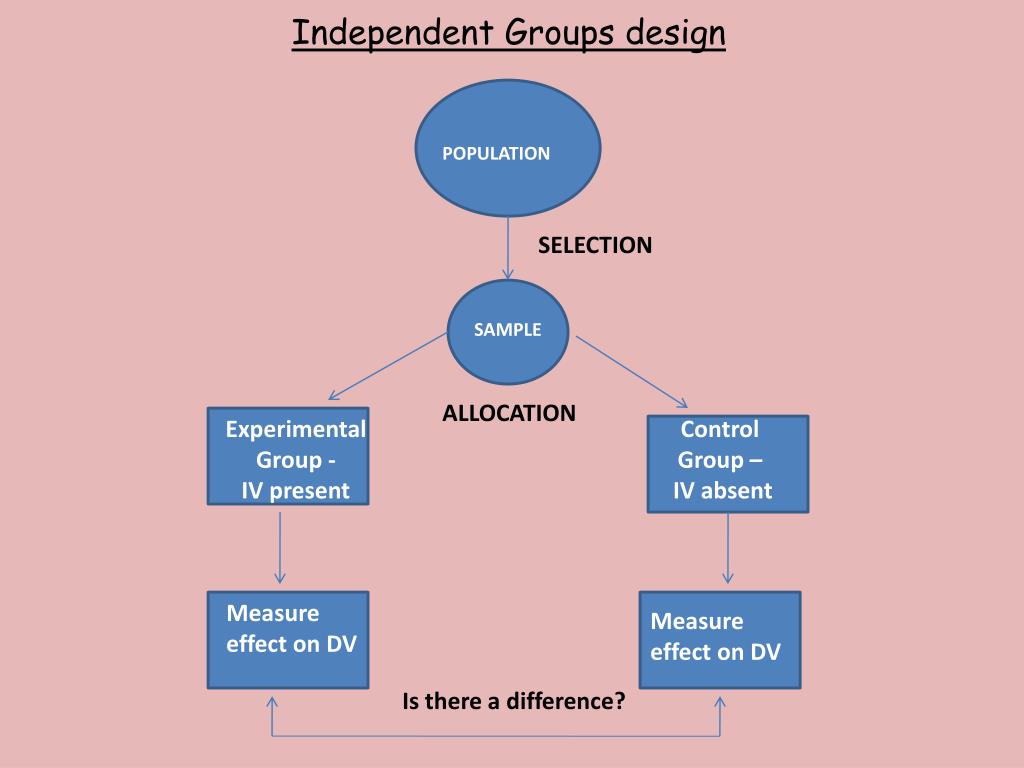Table Of Content

Fortunately, no matter where you are on your timeline, TEG can guide you in the right direction. Experimental design describes the way participants are allocated to experimental groups of an investigation. Types of design include Repeated Measures, Independent Groups, and Matched Pairs designs. Each participant is only assigned to one treatment group, so the experiments tend to be uncomplicated. Scheduling the testing groups is simple, and researchers tend to be able to receive and analyze the data quickly. For example, exposure to a reaction time test could make participants’ reaction times faster in a subsequent treatment if the same subjects participated in both conditions.
Holiday Themed Events
Researchers must decide how to assign participants or subjects to different treatment groups. This can be done randomly or through other systematic methods to ensure fairness and minimize potential biases. In a mixed factorial design, researchers will manipulate one independent variable between subjects and another within subjects. This method is called between-subjects because the differences in conditions occur between the groups of subjects.
Experimental Design: The Building Blocks of Reliable Research
A carryover effect is an effect of being tested in one condition on participants” behavior in later conditions. Researchers then analyze these patients and collect data to test their anxiety levels. The psychiatrist can use this study to decide which medication is best for her patients with OCD. The next day we could repeat the procedure, with the same group of people, but this time give them coffee before the experiment began. We expect the participants to learn better in “no noise” because of order effects, such as practice.
What is a Between Subjects Design In Behavioral Science?
Independent measures design, also known as between-groups, is an experimental design where different participants are used in each condition of the independent variable. This means that each condition of the experiment includes a different group of participants. Choosing between a between-subjects design and a within-subjects design requires careful consideration of the research objectives, the nature of the studied variables, and potential confounding factors.
Independent group hired to test schools for radioactive waste - KSDK.com
Independent group hired to test schools for radioactive waste.
Posted: Wed, 26 Apr 2023 07:00:00 GMT [source]
DJ Designs
Finally, you can enlist our production team to implement our stringent and quality-controlled production process to oversee the fabrication of your garments. We are a vertically-integrated studio located in L.A.’s Art District focusing on quality, high-end clothing. From production management to pattern making services in Los Angeles, we have experts who can assist you from start to finish. A pattern maker is the link between the ideas for your collection and the finished, saleable product. The pattern maker’s responsibility is less about artistic flair and more about the technical aspects of clothing construction and design. The mission of Independent Hands is to provide a higher quality service to Individuals with Developmental Disabilities through the various programs.
Choose a Pattern Maker Professional For Your Next Line
One member of each matched pair must be randomly assigned to the experimental group and the other to the control group. Pattern and sample-making services typically happen once you set the conceptualization and design details in stone. Because your patterns serve as the foundation for a solid and well-constructed collection that captures your vision, it’s essential to choose wisely.

Independent groups design is an experimental design where different participants are used in each condition of the experiment. Random allocation should be used to decide to which condition each participant should be allocated, as this ensures that each participant has an equal chance of being assigned to one group or another. It could be that the participants that we’ve randomly assigned to that condition have naturally faster reactions. They may be younger, or some of them may engage in activities that require fast reactions. Randomly allocating participants to independent variable conditions means that all participants should have an equal chance of taking part in each condition.
Wind & Water Designs
Between subjects design, also known as an independent groups design, is a research method commonly used in experimental and quasi-experimental research. In this design, participants are randomly assigned to different groups, each of which is exposed to a different level or condition of the independent variable. The outcomes of the groups are then compared to assess the effect of the independent variable on the dependent variable. In this design, subjects sharing a common nuisance characteristic are organized into blocks, and participants within each block are randomly assigned to the experimental groups.
Our Services
Condition one attempted to recall a list of words that were organized into meaningful categories; condition two attempted to recall the same words, randomly grouped on the page. To assess the effectiveness of two different ways of teaching reading, a group of 5-year-olds was recruited from a primary school. Their level of reading ability was assessed, and then they were taught using scheme one for 20 weeks. To compare the effectiveness of two different types of therapy for depression, depressed patients were assigned to receive either cognitive therapy or behavior therapy for a 12-week period. Saul Mcleod, PhD., is a qualified psychology teacher with over 18 years of experience in further and higher education.
For example, assume a psychiatrist is looking for a new medication to treat patients with Obsessive-Compulsive Disorder (OCD). They have already done one condition they will probably guess what the experiment is about. Participants could be eager to please or excited to do well in the first condition. The other group, comprising a different set of participants, does the test without coffee. A confounding variable could be an extraneous variable that has not been controlled.
They were given the same passage of text to read and then asked a series of questions to assess their understanding. This should be done by random allocation, ensuring that each participant has an equal chance of being assigned to one group. Whether in Los Angeles or anywhere in the world, sample makers are all about the details.
Experimental design is a systematic approach to planning, conducting, and analyzing experiments to identify and understand causal relationships between variables. It involves carefully designing the experiment to control for potential confounding factors and to ensure that data collection efforts effectively address research questions and hypotheses. By employing various experimental designs, such as completely randomized, randomized block, and observational Studies, researchers can enhance the validity and reliability of their findings.

No comments:
Post a Comment